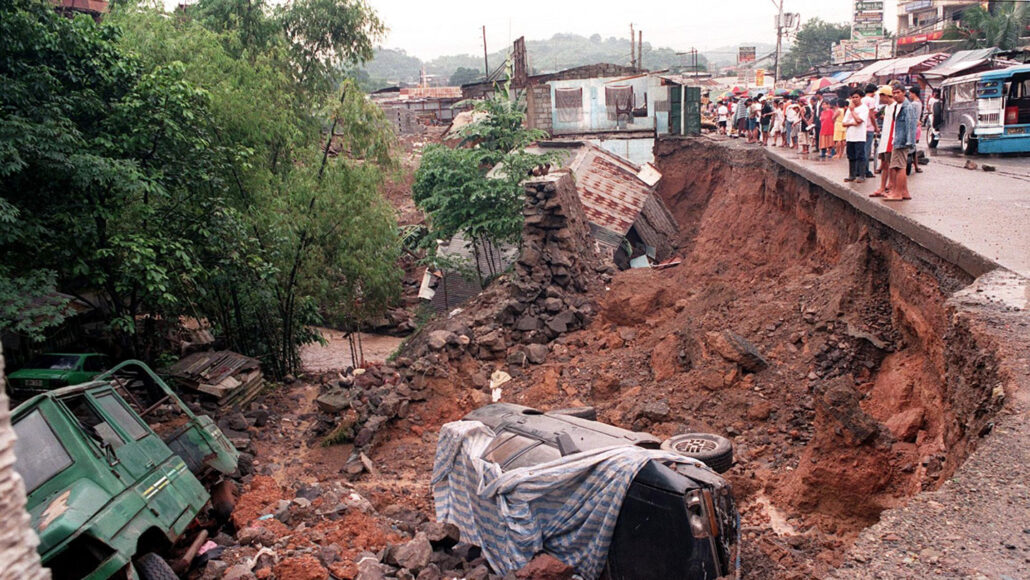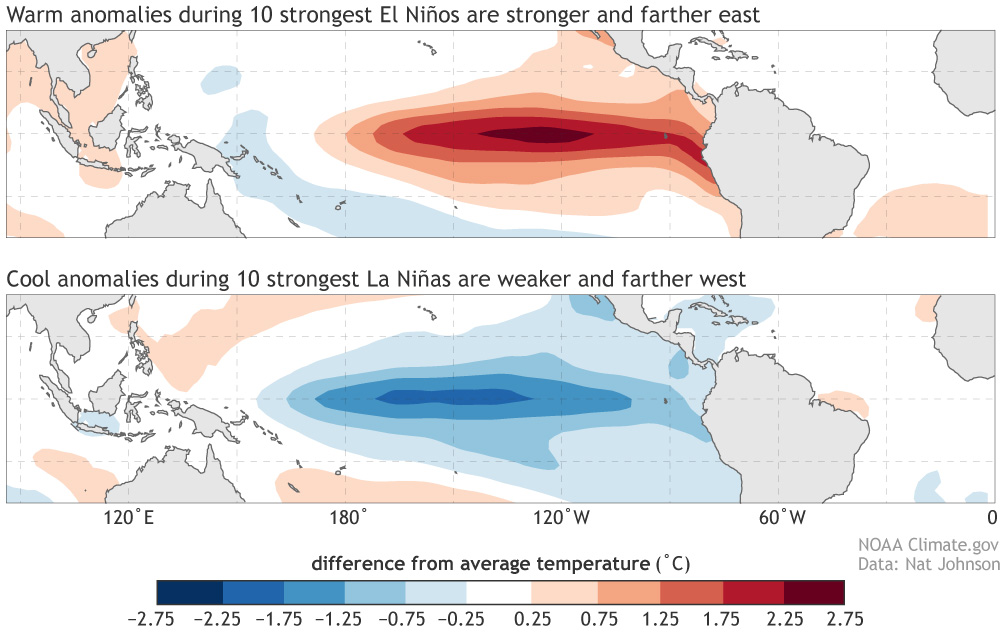Atlantic: One of the world’s five oceans, it is second in size only to the Pacific. It separates Europe and Africa to the east from North and South America to the west.
atmosphere: The envelope of gases surrounding Earth, another planet or a moon.
climate: The weather conditions that typically exist in one area, in general, or over a long period.
cloud: A plume of molecules or particles, such as water droplets, that move under the action of an outside force, such as wind, radiation or water currents. (in atmospheric science) A mass of airborne water droplets and ice crystals that travel as a plume, usually high in Earth’s atmosphere. Its movement is driven by winds. (in computing) A network of computers (hardware), known as servers, which are connected to the internet. They can be used to store data and computer programs (software) that can be accessed by one or many people at once, and from anywhere in the world.
El Niño: Extended periods when the surface water around the equator in the eastern and central Pacific warms. Scientists declare the arrival of an El Niño when that water warms by at least 0.4 degree Celsius (0.72 degree Fahrenheit) above average for five or more months in a row. El Niños can bring heavy rainfall and flooding to the West Coast of South America. Meanwhile, Australia and Southeast Asia may face a drought and high risk of wildfires. In North America, scientists have linked the arrival of El Niños to unusual weather events — including ice storms, droughts and mudslides.
ENSO: (short for El Niño-Southern Oscillation) It is a natural cycle of changing temperatures in the ocean and atmosphere, near the equator in the Pacific Ocean. During ENSO events, atmospheric pressure also changes in affected areas. (see also El Niño)
equator: An imaginary line around Earth that divides Earth into the Northern and Southern Hemispheres.
hurricane: A tropical cyclone that occurs in the Atlantic Ocean and has winds of 119 kilometers (74 miles) per hour or greater. When such a storm occurs in the Pacific Ocean, people refer to it as a typhoon.
La Niña: Extended periods when the surface water around the equator in the eastern Pacific cools for long stretches of time. Scientists will announce the arrival of a La Niña (lah NEEN yah) when the average temperature there drops by at least 0.4° C (0.72° degree F). Impacts on global weather during a La Niña tend to be the reverse of those triggered by an El Niño: Now, Central and South America may face severe droughts while Australia floods.
moisture: Small amounts of water present in the air, as vapor. It can also be present as a liquid, such as water droplets condensed on the inside of a window, or dampness present in clothing or soil.
Pacific: The largest of the world’s five oceans. It separates Asia and Australia to the west from North and South America to the east.
risk: The chance or mathematical likelihood that some bad thing might happen. For instance, exposure to radiation poses a risk of cancer. Or the hazard — or peril — itself. (For instance: Among cancer risks that the people faced were radiation and drinking water tainted with arsenic.)
sea: An ocean (or region that is part of an ocean). Unlike lakes and streams, seawater — or ocean water — is salty.
seawater: The salty water found in oceans.
weather: Conditions in the atmosphere at a localized place and a particular time. It is usually described in terms of particular features, such as air pressure, humidity, moisture, any precipitation (rain, snow or ice), temperature and wind speed. Weather constitutes the actual conditions that occur at any time and place. It’s different from climate, which is a description of the conditions that tend to occur in some general region during a particular month or season.









